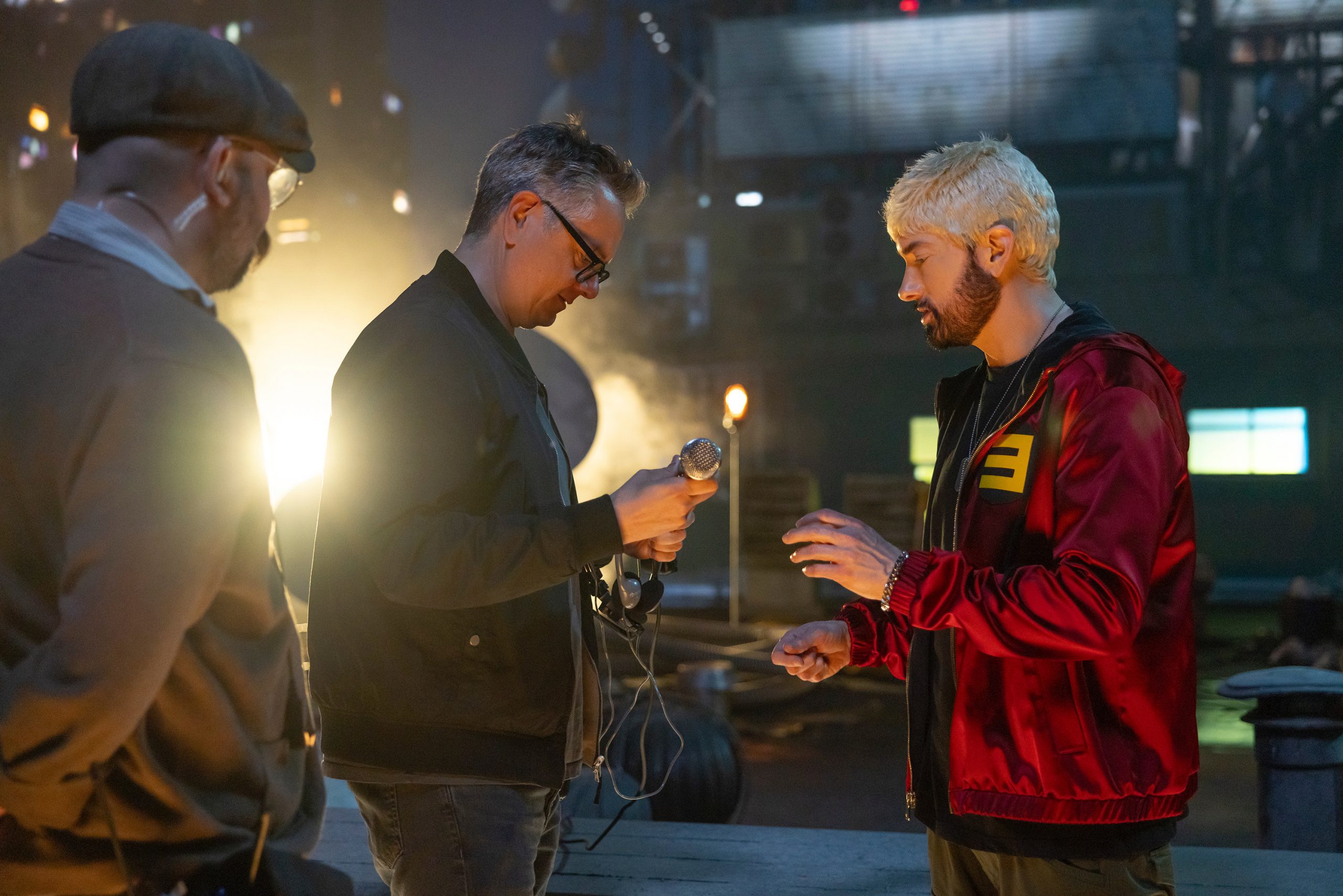Eminem’s “Houdini” video pulled off some mind-blowing visuals, and now the creative minds behind it are revealing just how they made it happen — at record speed.
The “Houdini” music video was not just a nostalgic throwback, as some might think, but a technical masterpiece. Packed with virtual sets, deepfake technology, and rapid-fire production, the video took viewers on a wild ride through Slim Shady’s past, blending 2002-style chaos with cutting-edge filmmaking.
What is especially remarkable is that the entire thing came together in just five days – because of director Rich Lee and his virtual production company Synapse.
A key creative force behind Eminem’s most visually striking music videos, Rich Lee has been collaborating with the Marshall for 15 years. From the gravity-defying visuals of “Not Afraid” to the fast-paced chaos of “Rap God” and the cinematic intensity of “Venom”, Lee has played a major role in shaping Eminem’s visual storytelling. Before stepping into the director’s chair, he built a career in Broadway set design and Hollywood special effects, contributing to films like “Pirates of the Caribbean” and “Minority Report”. With “Houdini” as their latest project, Lee continues to push creative boundaries — making it clear that his partnership with Eminem is far from over.
In a new interview, director Rich Lee and cinematographer Christopher Probst broke down the behind-the-scenes magic that made “Houdini” possible, from AI-powered visuals to real-time camera tracking. According to them, this music video became an experiment in pushing the limits of virtual production.
Speed & AI: The Key to Pulling It Off
Usually, creating a video on this scale would take weeks of planning — but Eminem’s team did not have that kind of time. Instead, they relied on AI-generated imagery to pitch the concept fast.
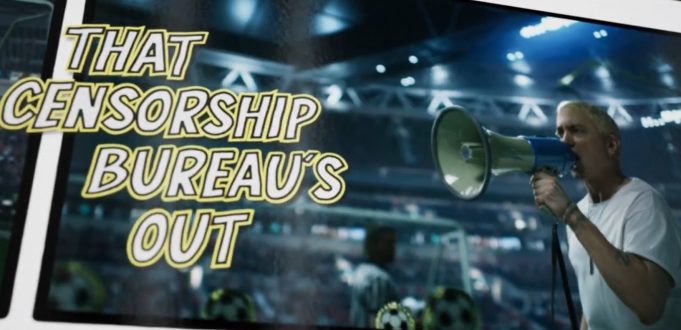
“The entire pitch deck was 90% AI, designed to look like a comic book”, Lee explained. “We used those images for everything — from lighting references to set designs”.
With the AI-assisted visuals approved, they moved into production almost immediately. Using Unreal Engine (the same tech behind modern video games), the team created virtual environments in real-time. This allowed them to build and tweak sets on the fly, saving weeks of traditional visual effects work.
Bringing 2002 Eminem Back with Deepfake Tech
One of the biggest challenges for the team was recreating early-2000s Slim Shady.
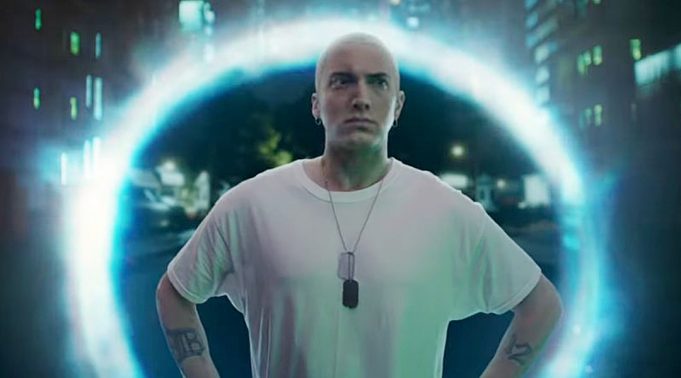
Since the video’s storyline involved old-school Eminem stepping through a portal into the present, the team needed a way to make him look like his younger self. Deepfake technology has become their ally in solving the problem.
“The traditional visual effects would have taken months and months and cost a ridiculous amount of money. And also wouldn’t have never looked as good”, Lee said. “So deepfaking him was the only real way to bring him back”.
The process involved capturing modern-day Eminem’s face and expressions, then digitally blending them with old footage to create a younger version.
Filming in a Controlled Virtual World
Instead of shooting all over Los Angeles, the team filmed nearly everything on a virtual production stage. This high-tech setup let them swap locations instantly.
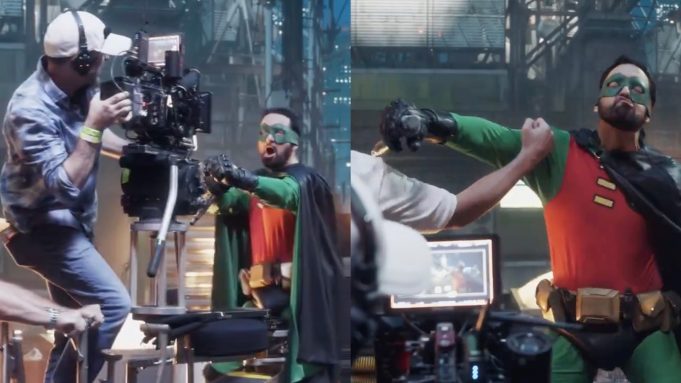
“In a normal shoot, we’d have to shut down streets, deal with paparazzi, and move between multiple locations”, Probst explained. “With this setup, we could put Eminem anywhere — without leaving the studio”.
Even Dr. Dre was blown away when he saw the setup. “He was like, ‘This is crazy — how do I get one of these?’” Probst recalled.
A Nod to Eminem’s Classic Videos
Beyond the technology, “Houdini” was also packed with Eminem Easter eggs — including references to “Without Me” and other classic videos.
One of the most fun throwbacks was the “Batman & Robin” building climb.
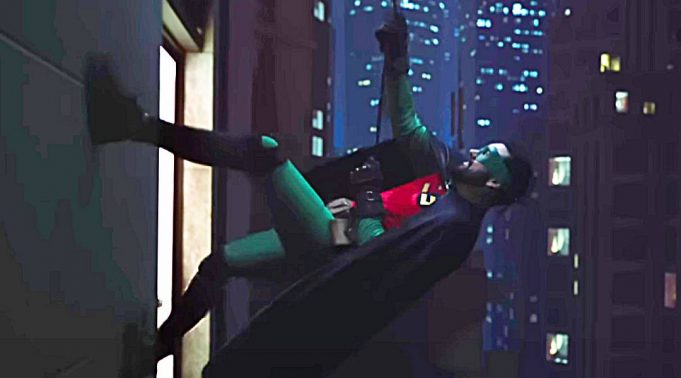
“All of that was just done with a building on its side, and [Eminem] ’s standing and we’re blowing wind at him. Traditionally, that was on a blue or green screen; you replace it, and it works fine. But because we were able to put the actual city behind him, we rotated the end display config. So, on camera, it looks like he’s climbing up the side of a building. It’s really, really fun. And he’s seeing it, reacting to it. It’s one of those things that adds – the people behind the camera really feeling it and getting in, involved in it. It also influenced his performance and made him have a lot of fun with it”, explains Lee.
Probst adds more, revealing that more challenges were involved in making Eminem’s struggle with gravity more convincing: “Instead of just having this facade of the building face flat on the ground, we pitched the entire deck almost 45 degrees. So even his cape is hanging, the rope has got a little bit of tension. So that helped the believability. And then he’s falling down there. So there was gravity that was helping it, making you look more believable. And we took the entire environment and rotated it and then straightened the camera up”.
How an iPhone Helped Bring “Demon Baby” to Life
One of the wildest behind-the-scenes details from making the “Houdini” music video is that the creepy “demon baby” was controlled by director Rich Lee’s own face.
Lee revealed that they used iPhone motion capture technology to map his facial expressions onto a latex baby prop. “We used MetaHuman Animator to record my facial expressions and then put that onto the baby”, he explained. To enhance the effect, an actress on set gave the doll subtle movements, making it feel eerily lifelike.
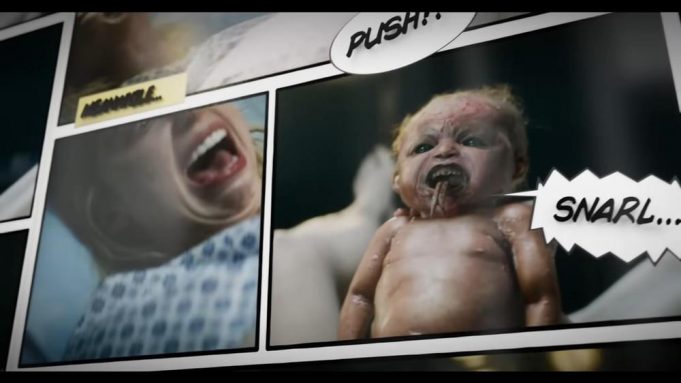
The process, while innovative, was also hilarious. “The facial capture is really from an iPhone, right? And he’s performing to an iPhone, making all these crazy contortions with his face”, cinematographer Christopher Probst added. “There’s a split screen of him, and I nearly pissed myself because of the things he’s doing with his face to drive the performance of his little, gnarly demon baby”.
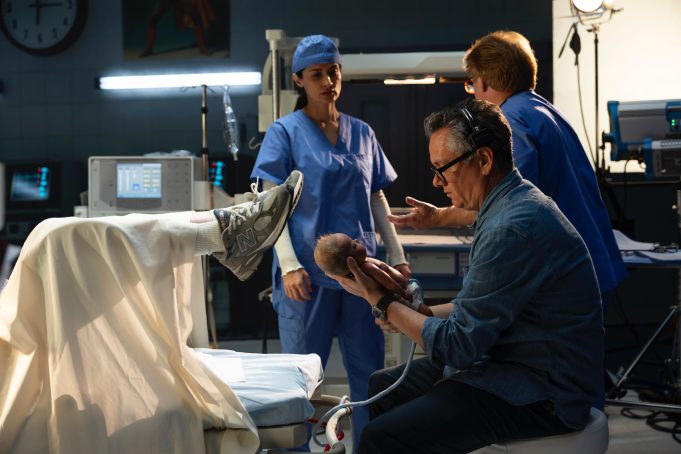
It’s another example of how virtual production pushes boundaries in music videos — and proving that, sometimes, the best visual effects start with a simple iPhone.
What’s Next? Even Faster Made Music Videos?
The team admitted that while “Houdini” pushed the limits, future projects could move even faster.
“If in 20 years, Eminem’s going to call and say, ‘I need a whole music video this afternoon’, we’ll probably be able to turn it in”, Lee joked.
For now, “Houdini” stands as one of the most ambitious music videos of the year — a perfect mix of nostalgia, technology, and pure Slim Shady energy. The MTV VMA award for Best Visual Effects is a recognition of the complex and innovative work Synapse Virtual Production did for Marshall.
What the interview in full below:


